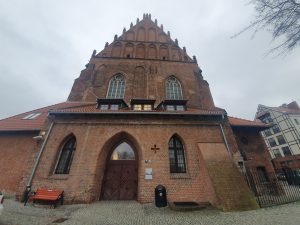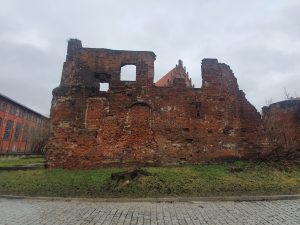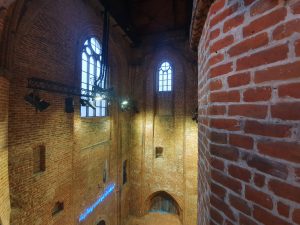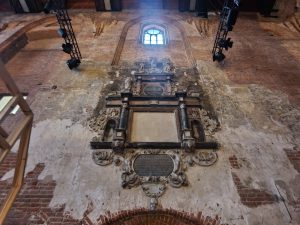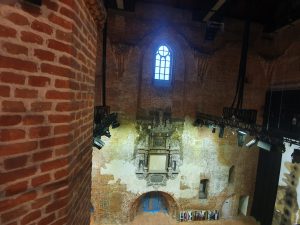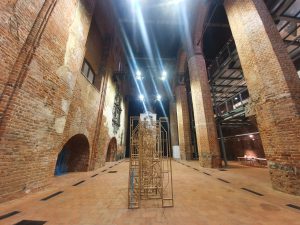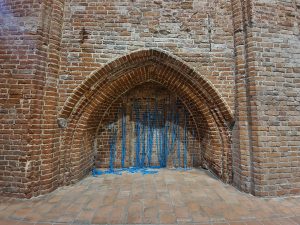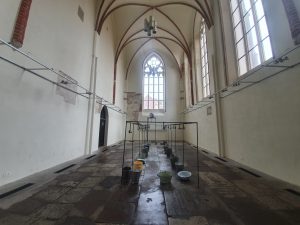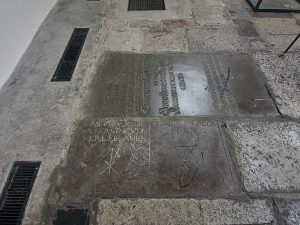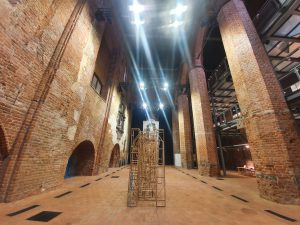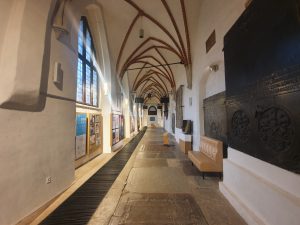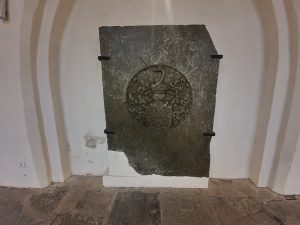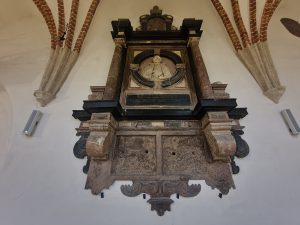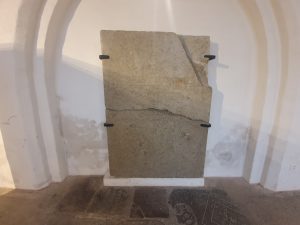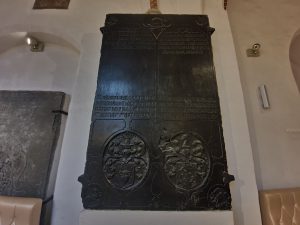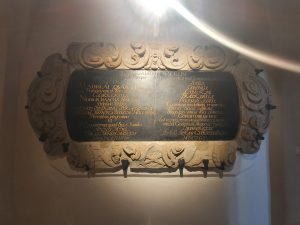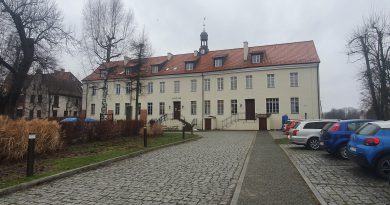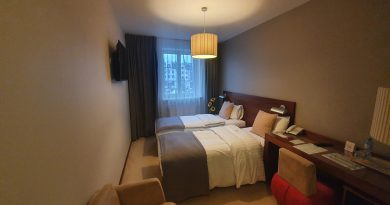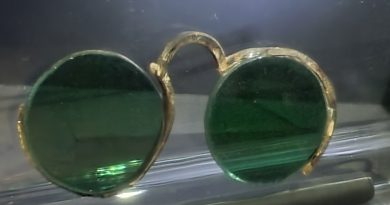Elbląg – Centrum Sztuki Galeria EL (former Dominican church of the Blessed Virgin Mary)
There has been a church on this site since 1239, the same time as the Teutonic Knights came to the city and I remember visiting their castle in Torun. The Dominicans founded their monastery and they extended the building in the late thirteenth century. A large fire destroyed much of the building in 1504, but it was rebuilt and later that century a pulpit was constructed which is today in the city’s cathedral.
The Dominicans had left the building in 1542, when they gave it to the city authorities, who then handed it to an Evangelical church. There was some reconstruction in the late nineteenth century, but there was major devastation in 1945 and a fire swept through the building. Much was lost and the building remained in ruins until 1959, when it was decided to turn it into an art gallery.
There are still some ruined buildings to the side of the churchyard.
The member of staff at the desk was helpful, but I think she was surprised to see anyone visiting, I suspect I was their first visitor of the day and they’d been open for a couple of hours. She showed me which bits of the building that I could visit, although first she had to rush around turning all of the lights on. There was a friendly atmosphere to the whole arrangement and the admission fee was low.
I had seen a photo of this before and after the war in the city’s museum earlier in the day, sadly badly damaged during the Second World War.
There is now a two floor metal structure within the church which is relatively recent, with this holding the art collections.
The former nave of the church, with the two new floors visible on the right. I probably should have used the lift, as the metal steps are see through and I realised just how high I was by the time I reached the second floor. I’m not great with heights, but I bravely battled on.
Looking past the blue, that’s a very Germanic arch.
Without being negative, as I understand that the art gallery arrangement has secured the building, but I didn’t engage with the artistic collection at all. I thought in places that it intruded on the building, the heritage of the church just undermined the works within it, they weren’t strong enough to cope with their environment. This artistic installation of water dripping into buckets (or I assume it’s an installation, it’s just randomly placed there) is rendered pointless because of the grand nature of what is around it, there’s no point trying to find meaning in an artwork when it’s surrounded by a building entirely dripping, if I can verge from literal to metaphor meanings, with stories. As a balance, I did try and find out more about this exhibit on the gallery’s web-site, but there’s nothing.
Many of these tombstones are damaged, but they’ve at least survived in some form.
When I went into this huge space the lights were off, and it had more of a charm and atmosphere to it. I understand the need for lights with regards to an art collection, but they take away from the space a little. I’m trying not to sound negative about the art collection, because that is what saved the building and makes it viable and accessible today, but it’s an uneasy mix in places. I’d imagine that, like me, a fair number of people are really visiting to see the building itself, not necessarily to see the galleries. With the exception of a sign externally giving the history of the church, there’s nothing internally giving further information about the building’s heritage. Nor either is there anything on the gallery’s web-site, which is perhaps a little disappointing.
One of the aisles (which is perhaps the side of a former cloister) is also accessible, all carefully restored.
Some of the tombstones and memorials which are located in the aisle of the church, all safely preserved now. I don’t know enough about the church locally to know if this could have remained an active religious building if it wasn’t for the Second World War, but I’m pleased that it has been saved. Given that the church was Protestant, the transition from Germany to Poland certainly meant it would have had a very different future. The building remained derelict until 1959, as this city took some time to recover, and the former church could easily just have been bulldozed. I like that there are many festivals and events that take place here, it’s a really thought provoking environment. I didn’t engage much with the artworks here today, but I like what the whole place has become, but I still feel as if I could have been told more about the art collection and the building itself.


